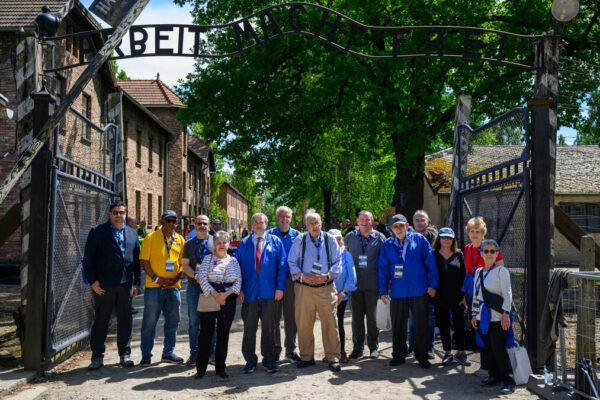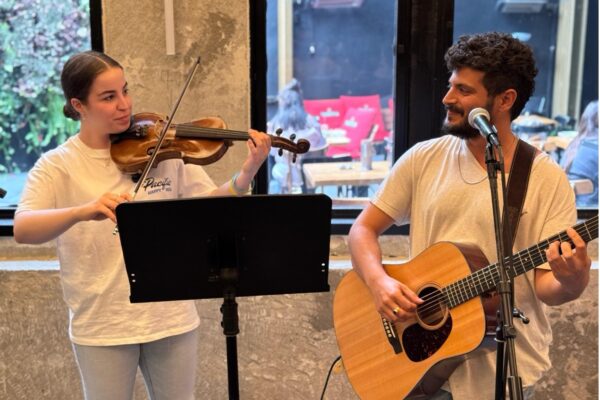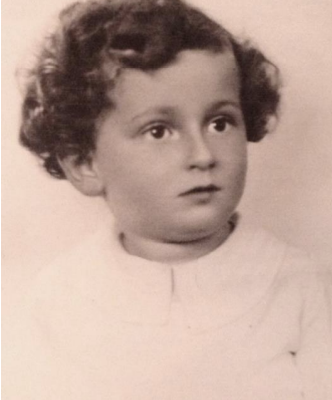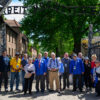FOR IMMEDIATE RELEASE
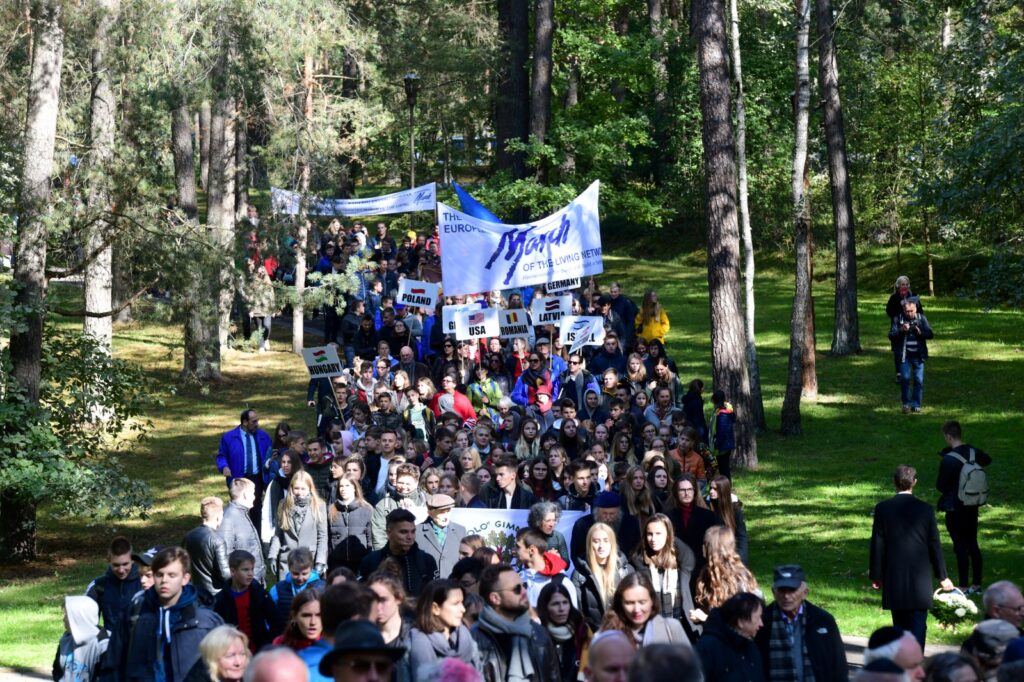
March in memory of Holocaust in Lithuania, September 2021 (photo credit: YOSSI ZELIGER)
The Lithuanian government, Jewish community and International March of the Living conducted a commemoration ceremony at the city square, which served as the Jewish ghetto during the Holocaust, ending with a march to the mass grave in Ponar. * Additional remembrance ceremonies took place nationwide, commemorating 200 Jewish communities annihilated during the Holocaust.
The ceremony in Vilna was attended by Prime Minister Ingrida Šimonytė:
“The Holocaust was not a tragedy of the Jewish people, it is a tragedy of all the peoples who lived and live in Lithuania – such catastrophes can happen again – outbreaks of violence and incitement to hatred have not gone away.“
On September 23rd, the National Memorial Day for the Genocide of Lithuanian Jews, the Lithuanian government, Jewish community and International March of the Living organization conducted a commemoration event in the presence of Lithuanian Prime Minister Ingrida Šimonytė, marking the beginning of the Holocaust for Lithuanian Jewry and 80 years to the annihilation of the Jewish communities in Eastern Europe. The central event attracted 5,000 participants, students and adults, including representatives of Jewish communities throughout Europe. Michel Gourary, Director of the European March of the Living, spoke at the ceremony.
The main ceremony took place at Rudninku Square, the site of the Jewish ghetto during the Holocaust and the station from which the trains left toward the mass grave in Ponar. The official ceremony was followed by a march to Ponar. In addition to the central event in Vilna, the public was invited to congregate throughout the country in areas where Jewish communities once existed, conduct local memorial services, and read aloud the names of the Jews murdered in the Holocaust as a commemorative gesture. The event was accompanied by a special lesson on the once prosperous and now merely disappeared Lithuanian Jewry community.
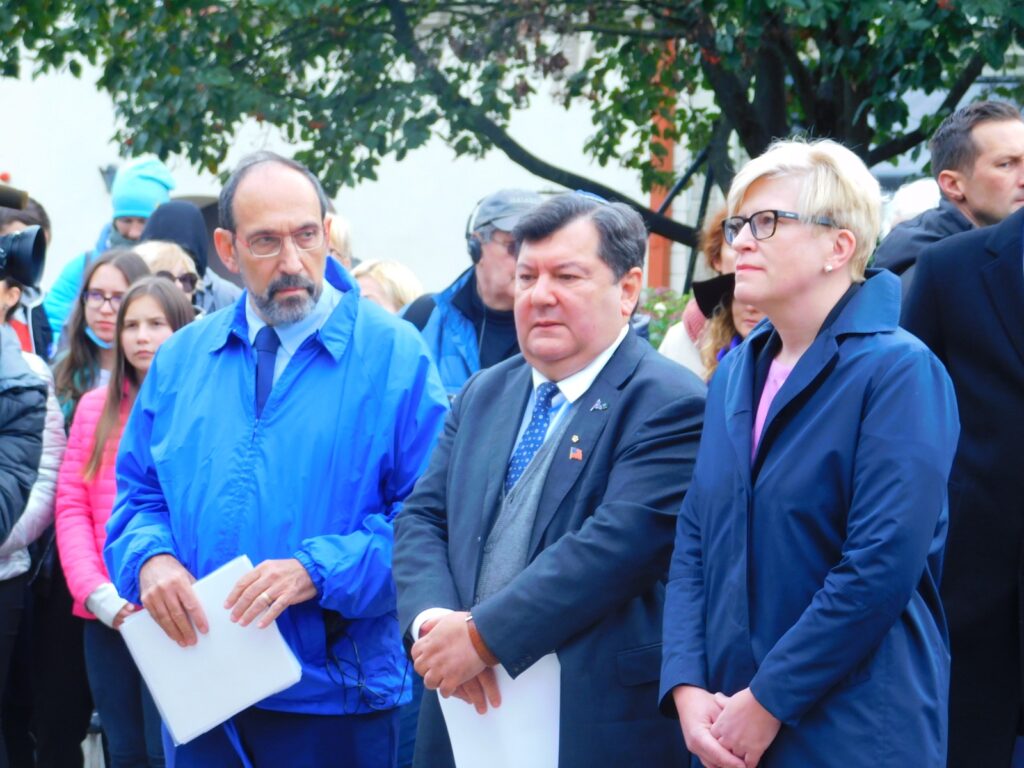
March in memory of Holocaust in Lithuania, September 2021 (credit: MARCH OF THE LIVING)
Prime Minister Ingrida Šimonytė: “What happened is not a tragedy of the Jewish people, it is a tragedy of all the peoples who lived and live in Lithuania and the whole state, of course, and the tragedy of the whole world, because the world has lost its unique colors, the world has lost its great potential, the world has lost perhaps discoveries and solutions. However, such catastrophes can happen again – outbreaks of violence and incitement to hatred have not gone away.”
Lithuanian MP, chair of the Lithuanian and Israeli inter- parliamentary group, and member of the Jewish community, Emanuelis Zingeris said that he initiated the national project “Memory Road 1941 – 2021” in partnership with the International March of the Living in order to commemorate the brutal murder of 94% of the 200,000 Jews who were living in Lithuania before the Shoah: “There are more than 200 Holocaust mass murder sites and we organized commemorative marches in most of those places that begin in the central parts of cities where Jews used to live and end at the sites of mass murder. And on the 23rd of September, the commemorating day of the liquidation of the Vilna Ghetto, which is the Lithuanian National Holocaust Remembrance Day, we will march with hundreds of High School students in the streets of Vilnius and further on in Ponar from the train station to the killing pits.”
International March of the Living Chairman, Dr. Shmuel Rosenman asserted the importance of marking national memorial days for the Holocaust of the European Jews and stated that the Holocaust obliterated entire Jewish communities, first and foremost targeting all Jews, but also damaging the countries in which the Jews were an integral part: “International March of the Living conducts local marches in countries in which the Nazi enemy acted to eradicate the Jewish communities as part of the Final Solution. Lithuania, a center of Jewish culture, was home to affluent Jews. Unfortunately, Ponar is among the main symbols of the Holocaust and I commend the Lithuanian government on the memorial events. The International March of the Living marches at all sites at which Jews were massacred to bear memory of the past and declare aloud ‘Never Again.’”
Lithuanian Jewry consisted of approximately 200,000 Jews before the Holocaust, with 70,000 living in the capital city of Vilna, where the main ghetto was built. The Nazis nearly obliterated the Jewish community in Lithuania in the Summer and Autumn of 1941 in what is called “Holocaust by Bullets,” when Nazis shot the Jews of Eastern Europe and buried them in mass graves. 200 Jewish communities were obliterated in Lithuania alone. One of the most prominent symbols of the Holocaust, for Eastern European Jews and in general, is the massacre at Ponar at the outskirts of Vilna, where 70,000 Jews were murdered. One of the most famous Holocaust songs was written as a lullaby to a child whose father was among the victims of the Holocaust.

